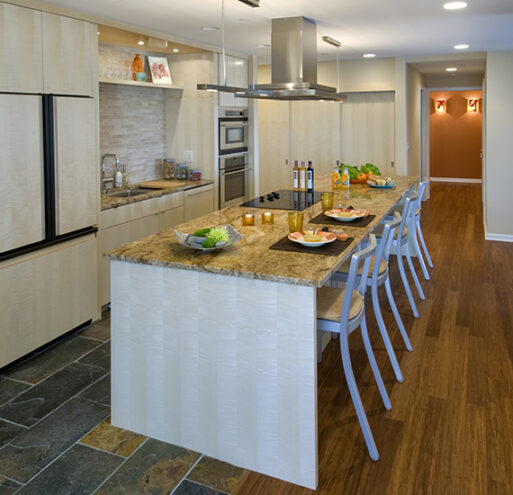
Downsize or age-in-place?
If you’re thinking to yourself, “My retirement may look different than my parents’ did” you’re not alone. According to the US Bureau of Labor Statistics, by 2026, workers aged 65 and older are expected to account for 8.6 percent of the total labor force, up from 5.8 percent in 2016. Post-pandemic, working Americans are maintaining their affinity for home offices, remote jobs, and work-from-home flexibility from their employers. Many Americans who do plan to retire at age 65 (or earlier) are choosing to work for pay in pursuit of hobbies or avocations that require some dedicated work or workshop space in the home.
Americans are living longer and increasing their focus on activity and wellness as they age (try booking time on a pickle-ball court these days!). We’re seeing a seismic shift in our view of aging as the median age in the United States continues to track upward and the number of Americans 65 and over is projected to increase by 47% over the next 25 years.
All of this is changing the way people now in their 40s and 50s–many of whom are providing some form of care for their aging parents–are looking ahead to living a vital and fulfilling life at age 60 and beyond. And it has them wondering how their current home may–or may not–support that vision.
Conversations on this topic typically boil down to two options: downsize or remodel to age-in-place. While aging homeowners consider the number of earning years ahead of them, evaluate their retirement plan and weigh the financial and emotional implications of the decision, the design considerations remain the same: long-term ease of use, comfort, lifestyle, and accessibility. We approach these considerations through an inclusive holistic approach called Universal Design.
Universal Design influences a building’s floor plan, entrance thresholds, door widths, bathroom fixtures, kitchen counter heights as well as lighting, finishes, furnishings, door handles, and other details that look beautiful and work well for people of all ages and abilities.
The case for downsizing
Homeowners who choose to downsize into a custom home in preparation for their later years may finance some or all of their project with proceeds from the sale of their current home or with other assets rather than enter into a mortgage. This can provide an immediate financial benefit as a smaller, new construction home will have lower energy bills and a smaller footprint to maintain.
Moving to a new location can also get homeowners closer to extended family, wellness and fitness facilities, restaurants, entertainment, and grocery stores and provide easier access to maintenance and lawn-care services, community resources, and medical providers that will be valuable as they age.
A custom-designed downsized home, or renovated second home, incorporating universal design provides the right space and accommodation to support and delight the homeowners with a forward look toward changing abilities and needs as they age.
The case for aging-in-place
Homeowners who choose to remodel their current home in order to age-in-place may pursue multiple alteration projects over a period of time following a master plan. Architects recommend this approach when a client’s vision can wait to be fully realized over time. A homeowner may wish to spread out the expense and/or fit into the flow of anticipated life changes (children moving out, semi-retirement, etc.) and adapt their home over time accordingly.
Since the cost of remodeling doesn’t provide an immediate equal increase in home value, it’s wise to invest in projects that will help you in the near term and make your home more attractive to prospective buyers long term. Once again, enter Universal Design. Remodeling projects that add value are also beneficial to aging-in-place and include kitchen and bathroom remodels, HVAC replacement, new windows, and new entry doors.
All of these projects can help create single floor living with room on upper and/or lower floors for visiting family members or in-home care providers if needed in the future.
Making a decision
The decision to downsize or to age-in-place can be an emotional one. Consulting with your tax preparer, financial advisor, family members, and an architect can help sort out not only what is affordable and practical but also what is delightful, safe, and supportive for a long, healthy and happy life.
Pin this post
Related Posts

A Kitchen for All
The kitchen is probably the most commonly-remodeled area of the home — at least in our experience. We redo ten…
Read more